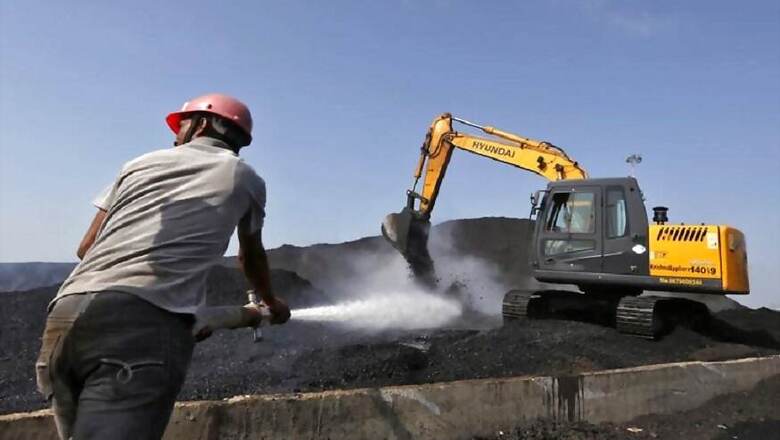
views
New Delhi: In a fresh round of FDI reforms, foreign players can now invest 100 per cent in the coal sector for mining and sale of coal under automatic route. They will also be able to carry out other associated processing infrastructure related to the sector such as coal washery, crushing, coal handling, and separation (magnetic and non-magnetic).
The reforms have come days after a report revealed a sharp decline in lending to coal power projects of country in 2018. According to ‘Coal Vs Renewable – 2018’, an analysis published by the Centre for Financial Accountability (CFA), coal fired power plant saw a drop of 90 per cent in lending by financial institutions in 2018 over the previous year 2017.
The CFA, a New Delhi-based financial institute, analysed project finance lending to 54 energy projects that reached financial close in 2018 and found that only five coal power projects with a total capacity of 3800 MW received financing of ₹6,081 crore in 2018. However, in 2017, twelve coal-fired projects with a combined capacity of 17,000 MW had received ₹60,767 crore.
It is clear from the report that lending to coal plants is mainly from the government banks and financial institutions, whereas private financial institutions are backing the rising renewable energy sector. According to the CFA analysis, of all energy project finance profiled, 80 per cent went to clean energy projects. Only 20 per cent went to coal power projects.
“Our analysis shows that investments in coal power are reducing at a significant pace. This trend is consistent with global market forces,” says Joe Athialy, executive director, Centre for Financial Accountability.
Experts say this decline is primarily due to two reasons: One, the electricity demand did not rise as it was expected in the last few years, and two, there is sharp rise in renewable energy, which is a lot cheaper in comparison to coal.
Data suggests that the graph of energy requirement growth has not been consistent in the last few years. In 2017-18, it was 6.1 per cent but dipped to 4.8 per cent in 2018-19. The energy generation growth has also declined consistently since 2015-16.
On the other hand, despite challenges, India’s renewable sector has grown sharply in the last five years and has jumped by more than 120 per cent in five years -- between 2014 and now. The total installed power capacity of renewable sources today stands at 80,000 MW and the government has a target to expand it to 1,75,000 MW till 2022.
The renewable energy, particularly the solar power, is today available at a cost of ₹ 2.44 per unit and therefore the financial institutions are less inclined to invest in coal.
“Renewable is competing with coal in a big way. The electricity from solar and wind is far cheaper than coal in the day time and renewable has a priority over grid due to the ‘must run’ rules. Wind is available even at night at a cost of around ₹ 3.00 per unit,” says Chandra Bhushan, deputy director of Centre for Science and Environment (CSE).
Today, only 14 per cent under construction coal power plants are financed by private financial institutions. According to the CFA analysis, the primary finance (funding to new projects) has shrunk by 93 per cent to ₹1,207 crore in 2018 from ₹17,224 crore in 2017.
However, the overall consumption of coal is rising in India despite the growth of renewables sector. Central Electricity Authority (CEA) has already projected that by 2030 coal power will constitute at least 50 per cent of India’s total energy basket despite the growth in renewables. Even the International Energy Agency (IEA) has said that India’s coal consumption will increase by 3.9 per cent through 2023, which is highest in any other country of the world.
But most of the coal power plants are financially stressed and the cause of rising NPAs today. According to a report by parliamentary standing committee tabled last year in 2018, gross NPAs in the power sector have risen steadily over the past few quarters. Out of the 34 “stressed” coal power projects, 35 per cent were still under construction.
“As per the RBI, the total outstanding loans of scheduled commercial bank to the power sector (including renewables) stood at Rs. 5.65 lakh crore (as on March 2018). Nearly 80 per cent of this amount is accounted for by the public sector banks (PSBs) and almost a fifth of this exposure is stressed on account of various structural factors plaguing the power sector,” the report says.


















Comments
0 comment